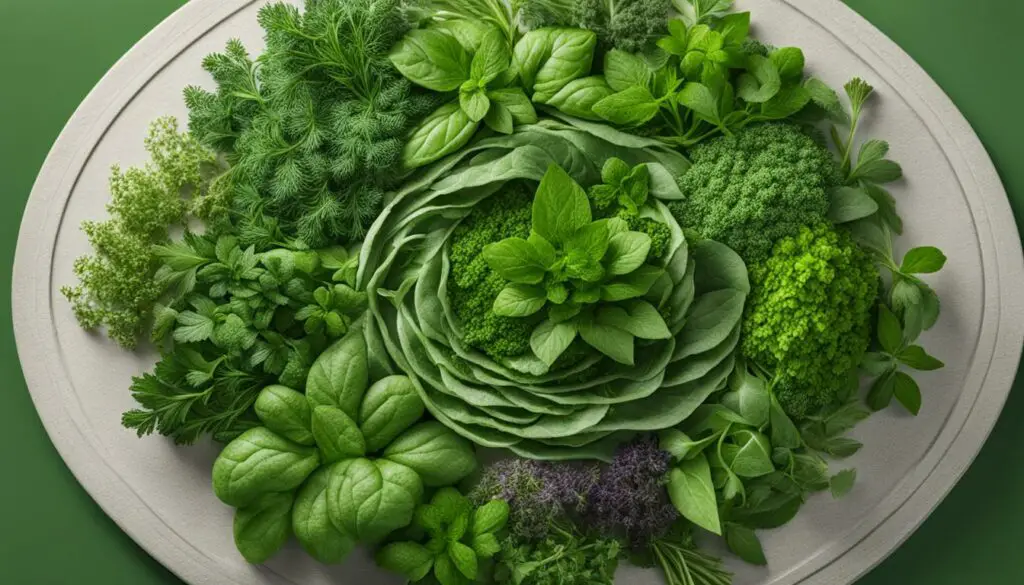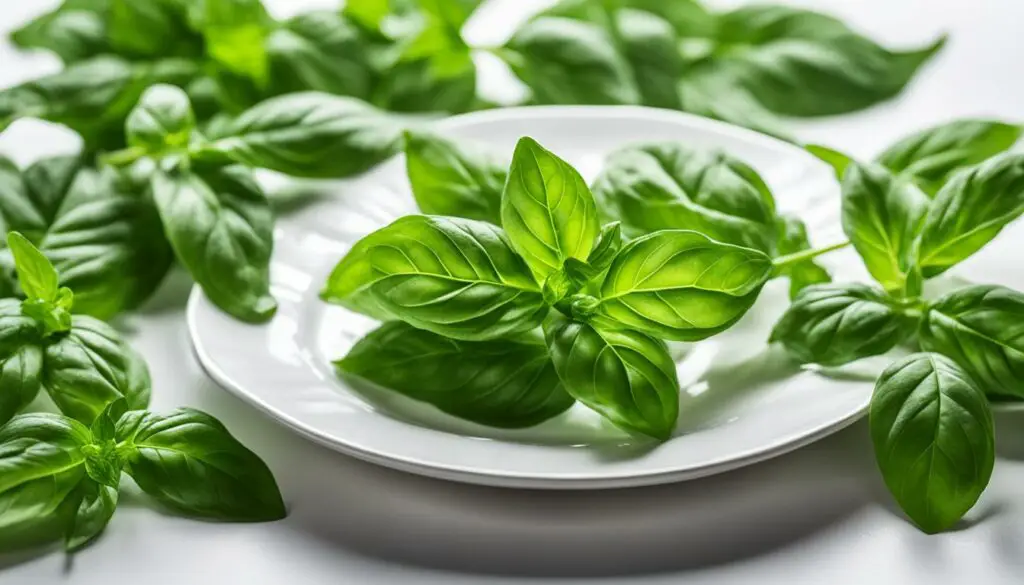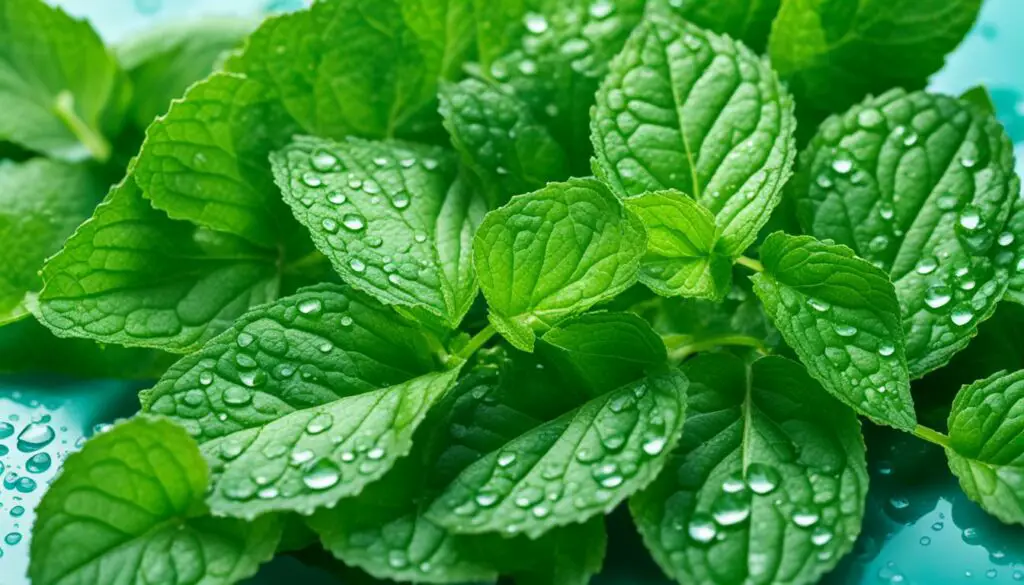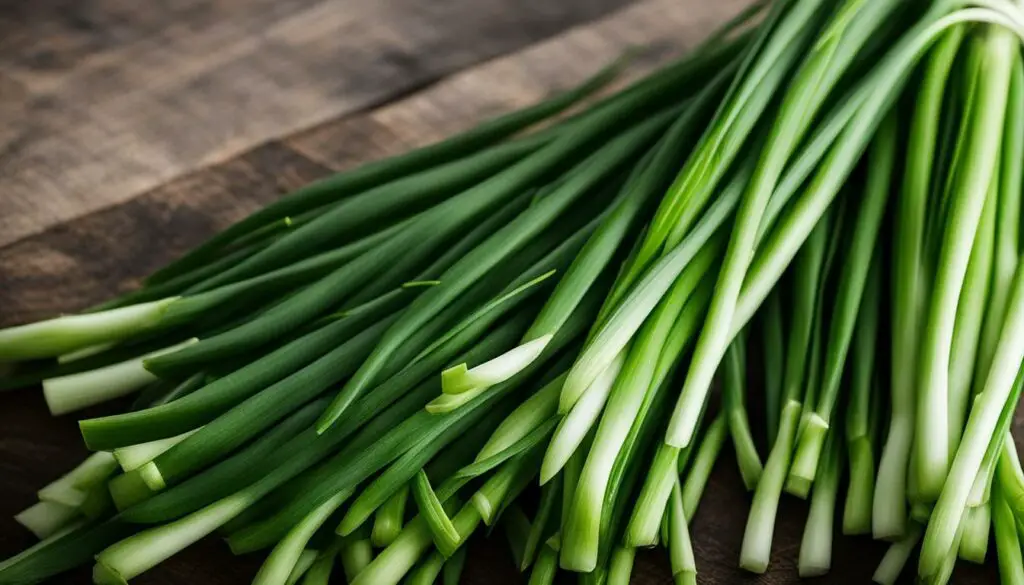Originally posted on November 18, 2023 @ 6:20 am
Whether you’re making a spicy salsa, fragrant curry, or flavorful soup, fresh coriander leaves, also known as cilantro, are a staple in many recipes. However, they are not always available or may not be to your liking. That’s where this ultimate guide on the best substitutes for fresh coriander leaves comes in!
In this comprehensive guide, we will explore various cilantro alternatives and coriander leaf substitutes that will allow you to achieve the same flavor and aroma in your dishes. From culinary herb blends to citrus zest, we’ve got you covered.
Table of Contents
Key Takeaways:
- Substitute for fresh coriander leaves are essential in dishes that require a touch of freshness and aroma.
- Some coriander leaf replacements include parsley, basil, mint leaves, green onions, and culinary herb blends or spices.
- Citrus zest, such as lemon or lime zest, is a tangy and refreshing alternative to fresh coriander.
- Culantro, an herb with a strong aroma and taste similar to cilantro, is an excellent substitute for fresh coriander leaves.
- Experiment with different substitutes to find the perfect replacement for fresh coriander in your favorite recipes.
Understanding Fresh Coriander Leaves

Fresh coriander leaves, also known as cilantro, are a popular ingredient in many cuisines worldwide. These delicate, green leaves offer a distinct, citrusy flavor with hints of sweetness and spice.
Cilantro’s unique taste and aroma make it a versatile herb that complements a range of dishes, from savory soups and stews to fresh salsas and salads. It is a staple ingredient in many Mexican, Thai, and Indian dishes, among others.
In addition to its culinary uses, cilantro is also known for its potential health benefits. It contains antioxidants and may aid in digestion, reduce inflammation, and lower cholesterol levels, among other benefits.
Appearance
Cilantro leaves are small and delicate, with a bright green, fan-like shape. The leaves grow in clusters on thin stems, creating a feathery appearance.
When purchasing fresh cilantro, look for vibrant, green leaves without any signs of wilting or discoloration. Ensure that the herb has a fresh, citrusy scent, as any off-putting aroma may indicate spoilage.
Cooking with Fresh Coriander Leaves
Cilantro is a versatile herb that can be used in various dishes, including:
- Salsas and dips
- Ceviche
- Tacos and burritos
- Curries and soups
- Salads and dressings
To use cilantro, rinse the leaves thoroughly in cold water and pat dry with a paper towel. Remove any thick or woody stems and roughly chop the leaves before adding them to your dish.
It’s best to add cilantro towards the end of the cooking process or as a garnish, as heat can diminish its flavor and aroma.
“I know people who say they don’t like cilantro. It’s a genetic thing for them. It’s not their fault.” – Anthony Bourdain
Cilantro Replacement: Parsley

If you’re looking for a cilantro replacement, parsley is a popular choice due to its similar appearance and mild flavor. It won’t completely mimic the taste of cilantro, but it can bring a fresh, herbaceous element to your dish.
How to use: When using parsley as a cilantro substitute, it’s important to note that parsley has a stronger flavor when cooked, so adjust the amount accordingly. You can also use a combination of parsley and other herbs to achieve a more complex flavor.
| Parsley | Cilantro |
|---|---|
| Similar appearance | Distinct appearance |
| Mild flavor | Strong, pungent flavor |
| High in vitamin C and K | High in vitamin A and K |
While parsley can be a great substitute for cilantro, keep in mind that it won’t work in every recipe. For example, in Latin American cuisine where cilantro is a staple ingredient, parsley may not provide the same authentic flavor. However, in dishes where cilantro is used as a garnish, such as soups or salads, parsley can be a suitable replacement.
Coriander Leaf Substitute: Basil

If you’re looking for an alternative to fresh coriander leaves, basil is an excellent option to consider. With its bright green leaves and distinctive aroma, basil adds a unique flavor to your dishes.
Basil comes in many varieties, but sweet basil is the most commonly used in cooking. It has a sweet and slightly peppery taste and a strong aroma that makes it an ideal substitute for coriander leaves in many dishes.
When using basil as a substitute, keep in mind that its flavor can be overpowering if too much is used. Start with a small amount and gradually add more until you achieve the desired taste.
| Basil vs. Coriander Leaves | Basil | Coriander Leaves |
|---|---|---|
| Appearance | Small, bright green leaves with pointed tips | Flat, lacy leaves with jagged edges |
| Flavor | Sweet and slightly peppery | Earthy, citrusy, and slightly bitter |
| Aroma | Strong and distinctive | Earthy and citrusy |
Basil is a versatile herb that can be used in many dishes, including Italian cuisine, salads, and even beverages. It pairs well with tomatoes, garlic, and mozzarella cheese, among other ingredients.
Tip: If you don’t have fresh basil on hand, you can use dried basil as a substitute. Keep in mind that the flavor of dried basil is more concentrated, so you’ll need to use less of it than fresh basil.
Citrus Zest as an Alternative

When fresh coriander leaves are unavailable, citrus zest can provide a tangy and refreshing flavor similar to cilantro. This substitute works best in dishes that require a hint of citrus, such as Mexican and Thai cuisines.
To use citrus zest as a replacement, select a citrus fruit such as lemons or limes, and utilize a zester or grater to remove the peel finely. Ensure you only remove the outer layer, avoiding the bitter white pith underneath.
Add the zest to dishes towards the end of the cooking process, as it can lose flavor when cooked for an extended period. Additionally, be cautious as citrus zest can be overpowering, start with a small amount and increase gradually to reach the desired flavor.
Recipe Example:
| Ingredients | Instructions |
|---|---|
| 1 lb of shrimp, deveined | 1. In a pan, saute shrimp until pink and firm. 2. Add two cloves of minced garlic and saute for an additional minute. 3. Add the zest of one lime and one teaspoon of salt. 4. Stir and remove from heat. |
| 2 cups of cooked white rice | 1. In a separate pan, saute two cups of cooked white rice in one tablespoon of olive oil. 2. Add the zest of one lemon and stir gently. 3. Season with salt and pepper. |
| 1/4 cup of fresh cilantro (optional) | 1. Spoon the rice onto a plate. 2. Place the sauteed shrimp on top of the rice. 3. Garnish with fresh cilantro (optional). |
This recipe offers a delicious alternative to shrimp with cilantro rice by swapping the coriander with lemon and lime zest.
Culantro: A Similar Herb

If you’re looking for a cilantro replacement with a taste and aroma similar to the original herb, consider using culantro. This lesser-known herb is also known as Mexican coriander, long coriander, and sawtooth coriander, among other names.
Unlike cilantro, which has delicate leaves, culantro has long, serrated leaves, and a much stronger flavor. It’s commonly used in Latin American, Caribbean, and Asian cuisines, particularly in soups, stews, and sauces.
How to Use Culantro
To use culantro as a coriander leaf substitute, chop the leaves finely and add them to your recipe. Use it in moderation as its flavor can be overpowering to some palates. Culantro also pairs well with other herbs like parsley, basil, and mint. You can also use it to add flavor to marinades and dressings.
“Culantro has a much stronger flavor than cilantro, so use it in moderation.”
A Word of Caution
While culantro is a great substitute for fresh coriander leaves, it’s important to note that it’s not a good substitute for ground coriander. Ground coriander has a citrusy, nutty flavor that is quite different from the fresh herb or culantro.
Where to Find Culantro
You may be able to find culantro at specialty grocery stores, Latin American or Caribbean markets, or online. If you’re unable to find it, consider growing it yourself. Culantro is relatively easy to grow and care for, making it a great addition to any herb garden.
Mint Leaves: A Cooling Alternative

Mint leaves, with their refreshing and cool taste, are a great substitute for fresh coriander leaves. Mint belongs to the same family as coriander, which makes it a suitable replacement in many recipes.
The most common type of mint used in cooking is spearmint, but you can also find peppermint, apple mint, and chocolate mint. The flavor and fragrance of each type may vary, so it’s essential to choose the right one for your dish.
If you’re using mint as a substitute for fresh coriander, make sure to chop it finely, as the leaves are larger than cilantro. Mint has a stronger flavor than coriander, so you may need to use less than the recipe calls for to avoid overpowering the other flavors.
Mint is a versatile herb that works well in various dishes, such as:
| Dish | Mint Usage |
|---|---|
| Salad | Chopped mint leaves can add a refreshing taste to salads with a lemon vinaigrette dressing. |
| Raita | Chopped mint can work well in a cucumber raita as a substitute for cilantro. |
| Mint Chutney | Mint leaves blended with yogurt, garlic, lemon juice, and sugar can create a delicious dip for snacks. |
| Mojito | Muddle some fresh mint leaves with sugar and lime juice, then top with soda and rum to make a refreshing cocktail. |
Mint can also pair well with lamb, peas, and chocolate, so don’t hesitate to experiment with this herb in your cooking.
Green Onion: A Flavorful Option

If you’re looking for an alternative to fresh coriander leaves, green onions might be the answer. Also known as scallions, these tender onion shoots offer a mild onion flavor that complements many dishes. They are widely available and affordable, making them a versatile filling for fresh coriander.
To use green onions as a substitute, chop them finely and sprinkle them over your dishes. They work well in soups, stews, and stir-fries, adding a subtle onion flavor without overpowering other ingredients.
If you want to use green onions as a garnish, slice them lengthwise into thin strips called “matchsticks.” These can add an attractive visual element to your dishes as well as a delicious finishing touch.
Green Onion vs. Fresh Coriander: Nutritional Comparison
Although green onions don’t offer the same distinctive flavor profile as fresh coriander leaves, they do offer several health benefits. They contain high amounts of vitamin K, which is essential for healthy bones and blood clotting. Additionally, they contain vitamin C, folate, and potassium.
| Nutrient | Green Onions (1 cup, chopped) | Fresh Coriander Leaves (1 cup, chopped) |
|---|---|---|
| Calories | 32 | 4 |
| Vitamin K | 261% DV | 388% DV |
| Vitamin C | 19% DV | 45% DV |
| Folate | 10% DV | 5% DV |
| Potassium | 7% DV | 5% DV |
While green onions may not have the same nutritional value as fresh coriander leaves, they are a healthy addition to any dish. They are low in calories and provide beneficial vitamins and minerals.
Culinary Herbs Blend
Creating a culinary herbs blend is an excellent way to mimic the flavor and aroma of fresh coriander leaves. By combining specific herbs, you can achieve a similar taste profile to coriander, enhancing your dishes’ overall appeal.
Here are some herbs you can use as cilantro alternatives or coriander leaf replacements:
- Italian parsley
- Thai basil
- Lemon thyme
- Mint
- Oregano
- Chives
To create a blend, consider using equal parts of parsley and mint, combined with a smaller amount of the other herbs to taste. Experiment with ratios until you find the perfect combination for your desired flavor and aroma.
Use the herbs blend to season your dishes, add it to marinades, or mix it with olive oil for a delicious dipping sauce.
“Using a blend of herbs can help you create a unique flavor profile that rivals fresh coriander leaves,” says Chef John, a professional culinary expert.
Spices with Similar Flavors
When fresh coriander leaves are not available, you can turn to various spices that provide a similar taste and aroma. Consider these spices as fresh coriander leaf alternatives:
- Cumin: Known for its nutty, warm flavor, cumin works well as a coriander leaf substitute in Mexican and Indian dishes.
- Fennel seeds: Fennel seeds have a slightly sweet, licorice-like flavor, making them an excellent replacement for coriander in Italian and Mediterranean cuisine.
- Caraway seeds: With a flavor similar to cumin, caraway seeds can be added to savory dishes as a fresh coriander substitute.
- Coriander seeds: The seeds of the coriander plant have a similar taste to its leaves. You can grind them and use them as a substitute in any recipe that calls for fresh coriander leaves.
These spices work well in many dishes, providing the same flavor profile as fresh coriander leaves. Don’t be afraid to experiment and find the right spice for your recipe.
Cooking without Fresh Coriander Leaves
Sometimes, despite our best efforts, we run out of fresh coriander leaves. However, this doesn’t mean you have to sacrifice the flavor of your dish altogether. Here are some tips and suggestions for cooking without fresh coriander leaves:
Use a Coriander Substitute
Consider using one of the coriander leaf substitutes we’ve discussed earlier in this guide, such as parsley, basil, or mint leaves. Each of these substitutes brings its unique flavor profile to the table, allowing you to maintain the taste of your dish.
Experiment with Spices
If you don’t have access to fresh coriander leaves, try experimenting with other spices that offer similar flavor notes. For instance, cumin, fennel seeds, or ground coriander can add a depth of flavor to your dishes. Be mindful of the quantities you use, as these spices can be quite potent.
Use Fresh Herbs
Although they don’t offer the same flavor as fresh coriander leaves, other fresh herbs can still enhance your dish. Chopped cilantro stems, parsley, coriander seeds, or even bay leaves are all good options to add a fresh and fragrant element to your dish.
Balance the Flavors
Without fresh coriander leaves, your dish may lack the same balance of flavors. To make up for this, try adding a citrus element to your dish, such as a squeeze of lime or lemon, or a tangy tomato-based sauce. This will help balance out the other flavors in your dish and provide a new dimension.
Don’t Overdo It
While it might be tempting to add extra seasoning or spices to compensate for the lack of fresh coriander leaves, be careful not to overdo it. Too much seasoning can overpower your dish and throw off the balance of flavors. Start with small amounts and adjust as necessary.
“Cooking without fresh coriander leaves can be a challenge, but with a bit of creativity and experimentation, you can still achieve a delicious and flavorful dish.”
Conclusion
When it comes to cooking, fresh coriander leaves, also known as cilantro, play a significant role in adding flavor and aroma to dishes. However, if you’re unable to access this herb or need an alternative, there are various substitutes to explore.
Parsley, basil, citrus zest, culantro, mint leaves, green onion, culinary herb blends, and spices are all viable options to consider. Each alternative brings its unique taste and aroma to dishes, and some may even complement your recipe better than fresh coriander leaves.
Experiment and Discover Your Favorite Coriander Leaf Substitute
Don’t be afraid to experiment with these substitutes to find the perfect replacement for fresh coriander leaves in your favorite recipes. Whether you’re making salsa, curry, or guacamole, each alternative can add a unique twist to your dishes.
Additionally, if you’re unable to find any of these substitutes, you can always try cooking without fresh coriander leaves. Utilize ingredients like lime juice, cumin, and even jalapenos to fill the void left by the missing herb.
Final Thoughts
Ultimately, the goal of cooking is to create delicious meals that satisfy your palate and those of your loved ones. Fresh coriander leaves are undoubtedly a fantastic addition, but with this guide, you now have a variety of alternatives to explore.
So, the next time you’re unable to access fresh coriander leaves, don’t fret. Instead, try one of the numerous alternatives listed in this guide. Who knows, you may even discover a new favorite herb or spice that elevates your dish to the next level.
FAQ
What is a good substitute for fresh coriander leaves?
There are several alternatives you can use as a substitute for fresh coriander leaves. Some popular options include parsley, basil, citrus zest, culantro, mint leaves, green onion, culinary herb blends, and certain spices.
How do I use parsley as a cilantro replacement?
Parsley can be used as a substitute for fresh coriander leaves in various recipes. Simply chop the parsley finely and use it in the same quantities as you would use cilantro. Keep in mind that parsley has a milder flavor, so you may need to adjust the amount to taste.
Can I use basil instead of coriander leaves?
Yes, basil can be used as a substitute for coriander leaves. It adds a fresh aroma and flavor to dishes. Use basil leaves in place of coriander in similar amounts to maintain the desired taste.
How can I replace fresh coriander with citrus zest?
If you don’t have fresh coriander leaves, you can use citrus zest, such as lemon or lime zest, as an alternative. The zest will provide a tangy and refreshing flavor similar to coriander. Simply grate the outer peel of the citrus fruit and use it in your recipes.
What is culantro, and how can I use it as a cilantro substitute?
Culantro is an herb with a strong aroma and taste similar to cilantro. It can be used as a substitute for fresh coriander leaves. Chop the culantro leaves finely and use them in the same quantities as cilantro in your recipes.
Can I use mint leaves instead of fresh coriander?
Yes, mint leaves can be used as a substitute for fresh coriander leaves. They add a refreshing and cooling element to dishes. Use mint leaves in similar amounts as coriander to achieve the desired flavor profile.
How can I use green onion as a replacement for fresh coriander?
Green onions, also known as scallions, offer a mild onion flavor that complements many dishes. When fresh coriander is not available, you can use green onions as a flavorful alternative. Chop the green onions and use them in the same quantities as coriander.
What are some culinary herbs I can blend as a substitute for fresh coriander?
When fresh coriander leaves are unavailable, you can create a blend of other culinary herbs to mimic its taste. Some herbs that work well together for this purpose include parsley, basil, mint, and dill. Experiment with different ratios to achieve the desired flavor.
Are there any spices that can replace fresh coriander leaves?
Yes, there are spices that possess flavors similar to fresh coriander leaves. Cumin, fennel seeds, and caraway seeds are commonly used as substitutes. Use them in smaller amounts than you would use coriander to avoid overpowering the dish.
What can I do if I don’t have fresh coriander leaves?
If you don’t have fresh coriander leaves, you can try using one of the substitutes mentioned earlier, such as parsley, basil, citrus zest, culantro, mint leaves, green onion, culinary herb blends, or spices with similar flavors. Each option brings its unique taste and aroma to your dishes.
See also:
Leave a Reply